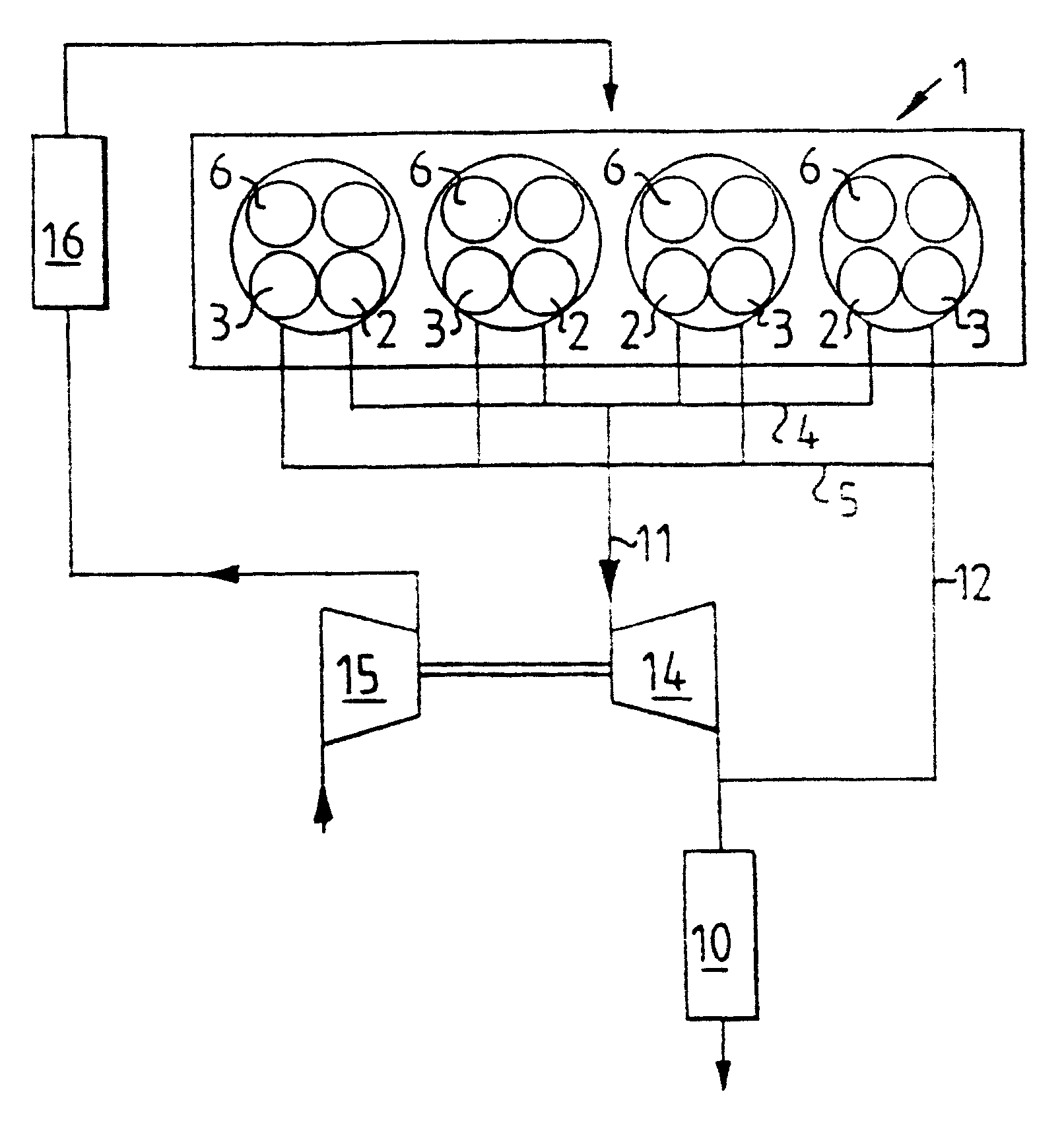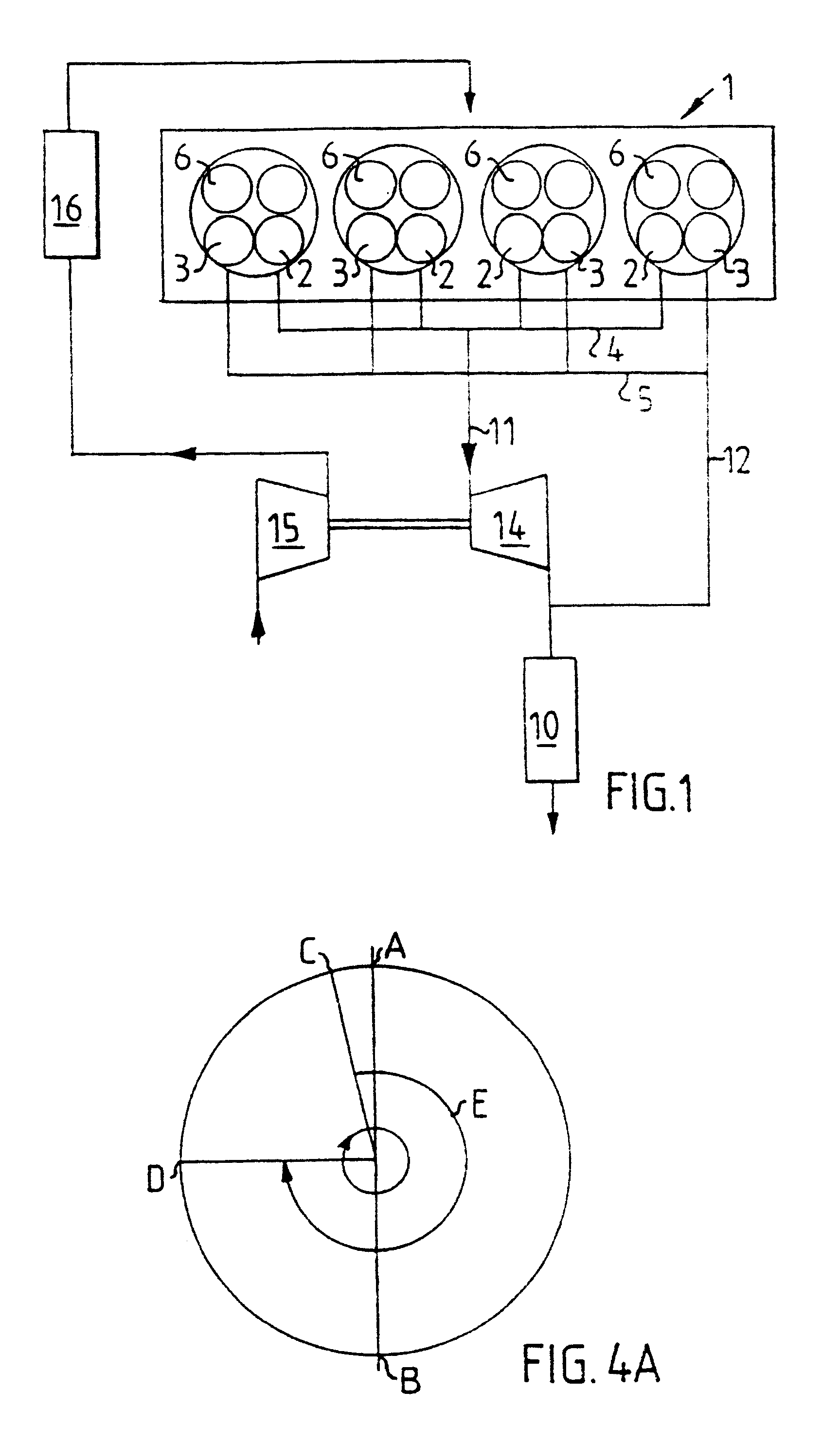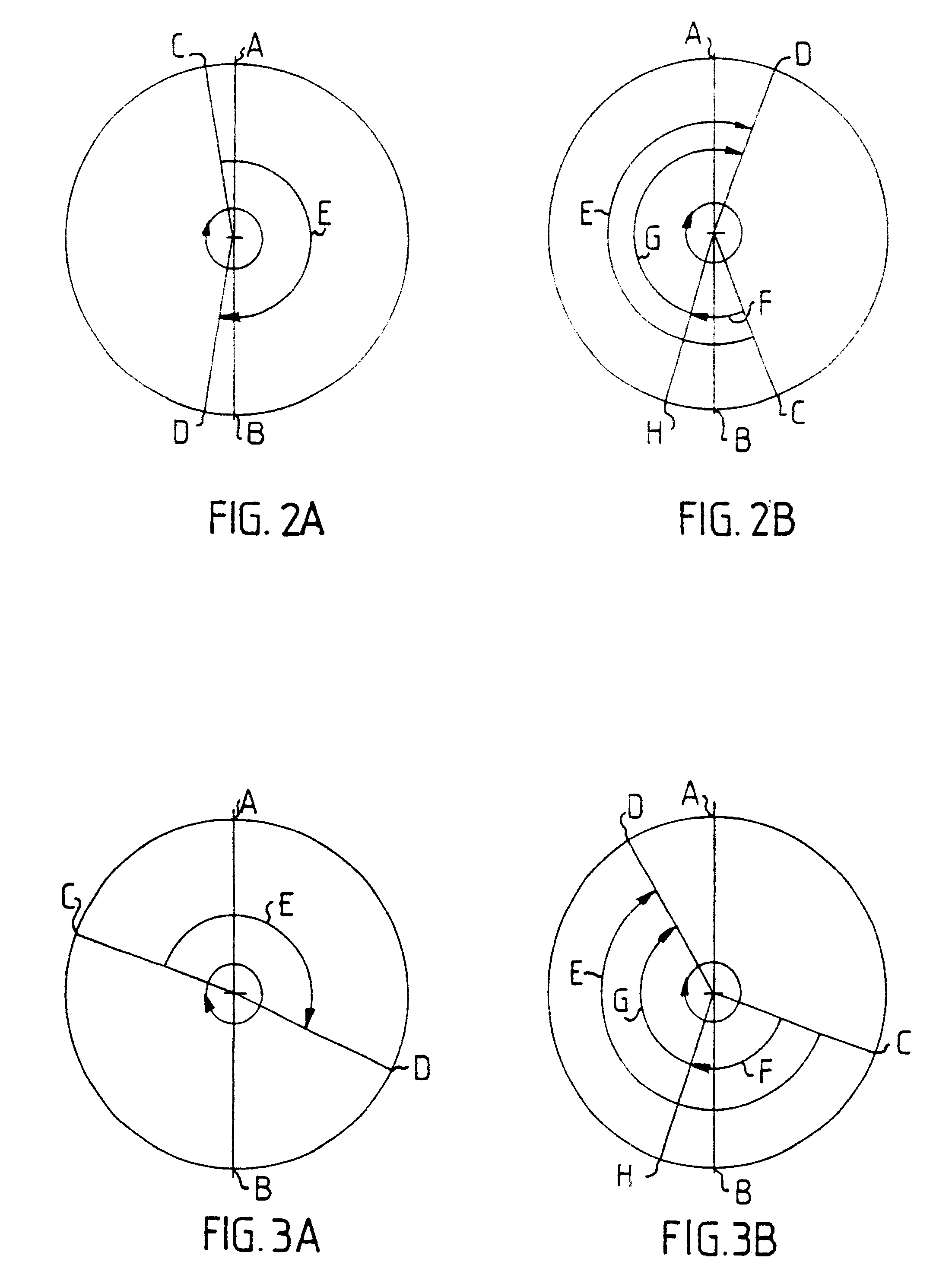Combustion engine
a combustion engine and combustion chamber technology, applied in the direction of engines, output power, fuel air intakes, etc., can solve the problems of poor volumetric efficiency, negative pressure difference, and risk of premature ignition of the same, and achieve the effect of improving the performance of the internal combustion engin
- Summary
- Abstract
- Description
- Claims
- Application Information
AI Technical Summary
Benefits of technology
Problems solved by technology
Method used
Image
Examples
Embodiment Construction
FIG. 1 shows diagrammatically a multi-cylinder internal combustion engine 1 according to the invention made as an Otto engine. The cylinders of the engine each have at least two exhaust-gas valves 2 and 3. From the first exhaust-gas valves 2 of the cylinders, exhaust gas is conducted out to a first exhaust manifold 4 common to the cylinders. From the second exhaust-gas valves 3 of the cylinders, exhaust gas is conducted out to a second exhaust manifold 5 common to the cylinders. The first exhaust manifold 4 is connected to a catalyst 10 via a first exhaust pipe 11, and the second exhaust manifold 5 is connected to the catalyst 10 via a second exhaust pipe 12. One or more silencers (not shown) is or are present in the conventional manner downstream of the catalyst 10.
The engine 1 is also equipped for supercharging by means of a compressor driven via an exhaust-driven turbine. The exhaust-gas turbine 14 is connected in the first exhaust pipe 11 and is consequently fed from the first e...
PUM
 Login to View More
Login to View More Abstract
Description
Claims
Application Information
 Login to View More
Login to View More - R&D
- Intellectual Property
- Life Sciences
- Materials
- Tech Scout
- Unparalleled Data Quality
- Higher Quality Content
- 60% Fewer Hallucinations
Browse by: Latest US Patents, China's latest patents, Technical Efficacy Thesaurus, Application Domain, Technology Topic, Popular Technical Reports.
© 2025 PatSnap. All rights reserved.Legal|Privacy policy|Modern Slavery Act Transparency Statement|Sitemap|About US| Contact US: help@patsnap.com



